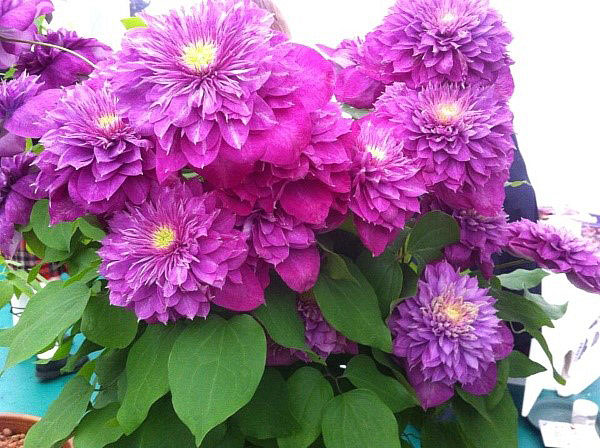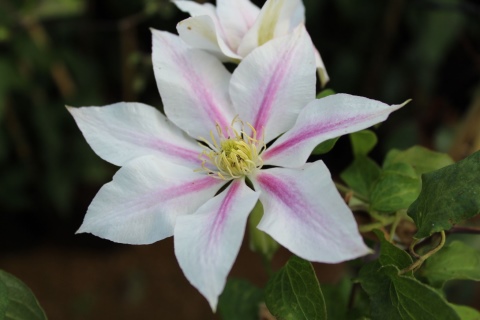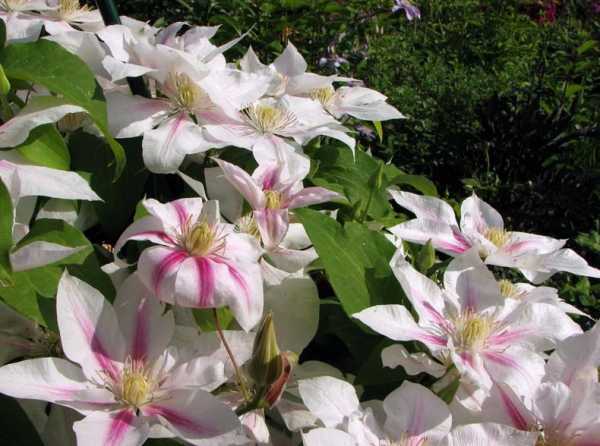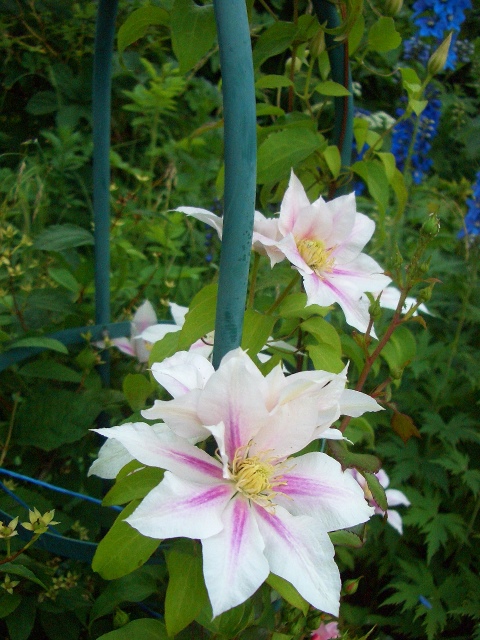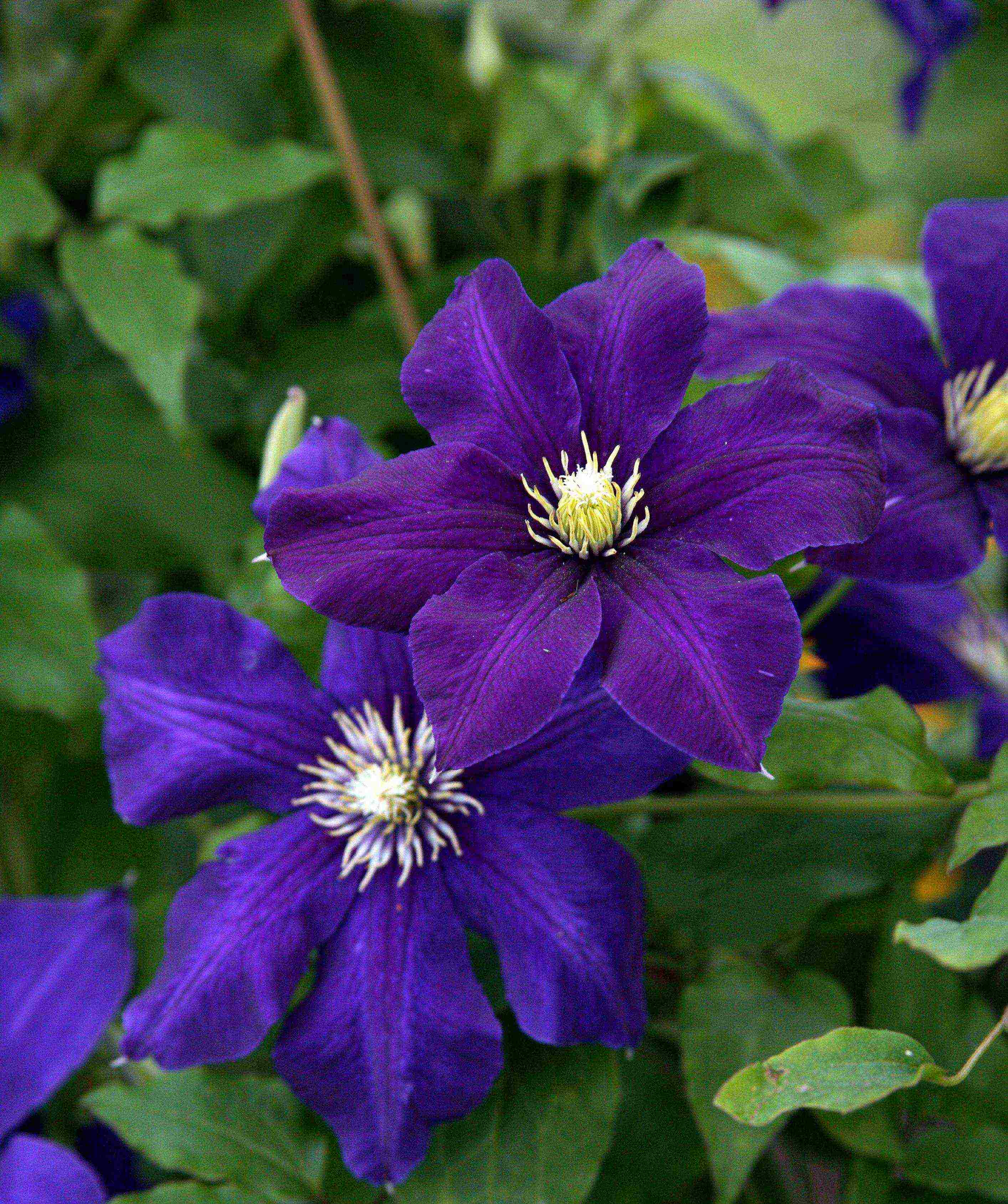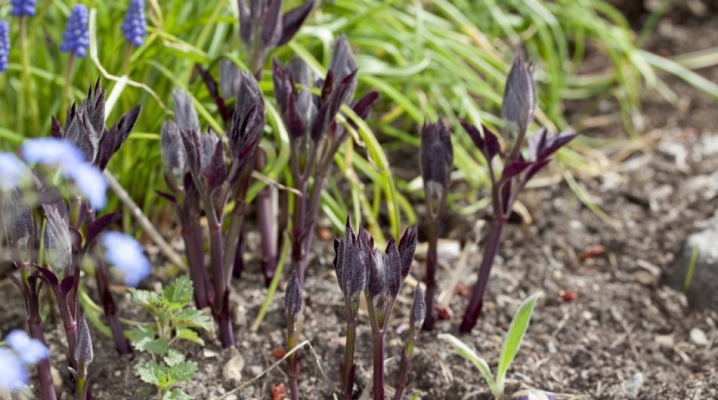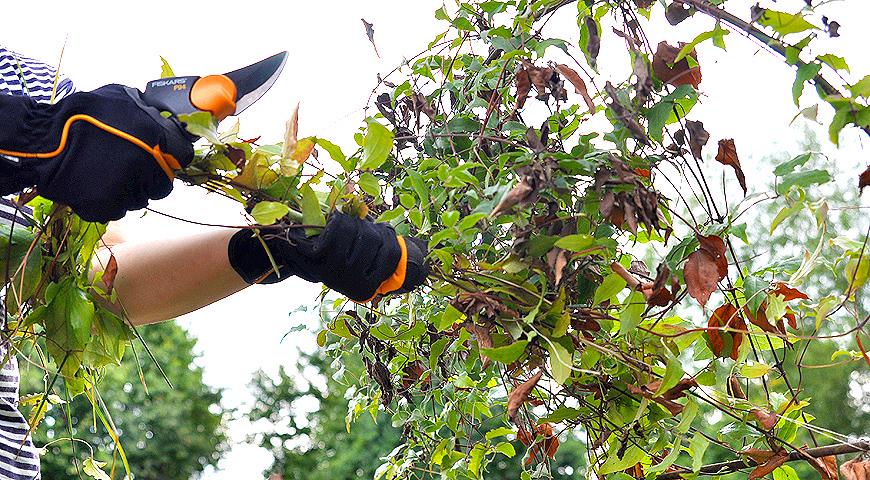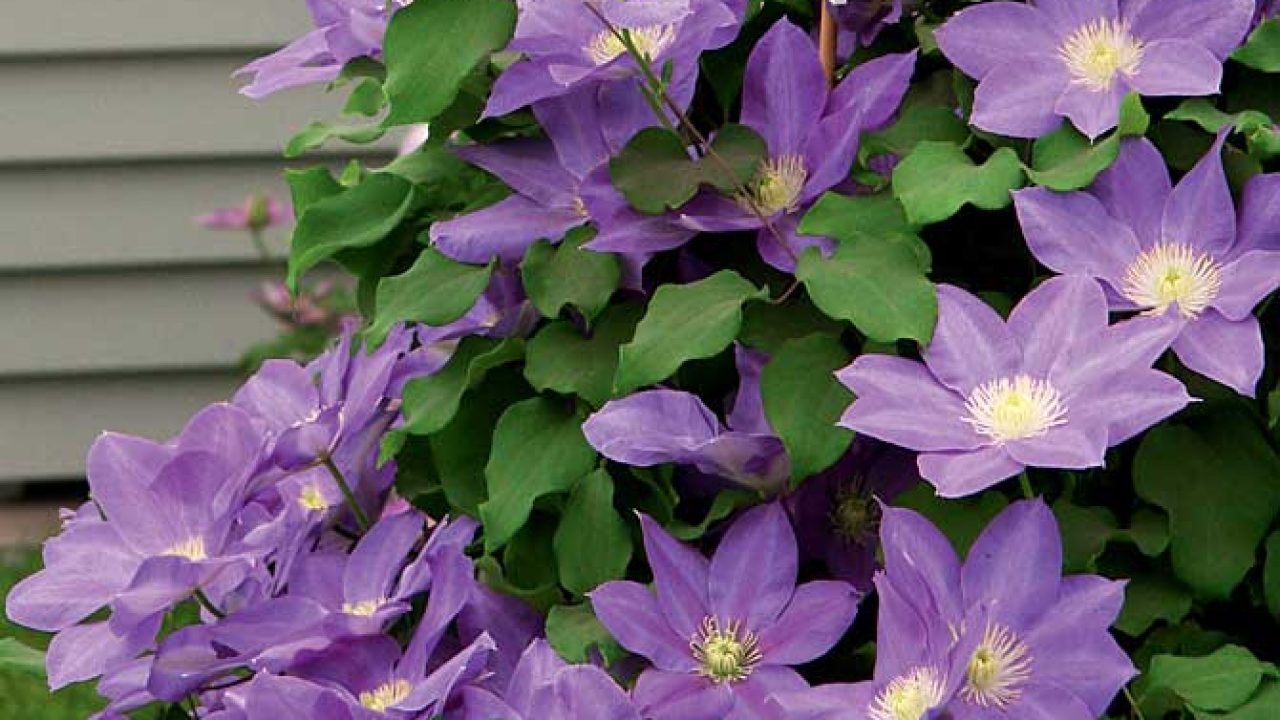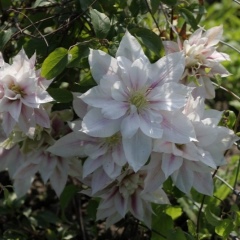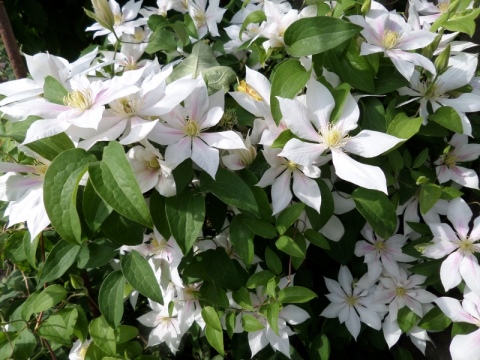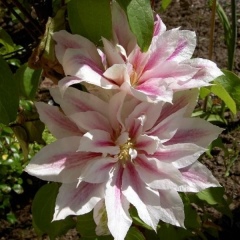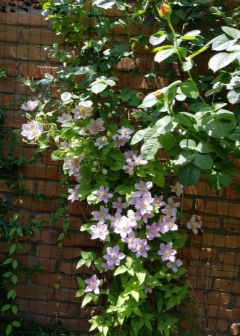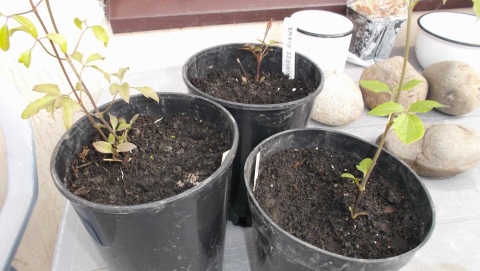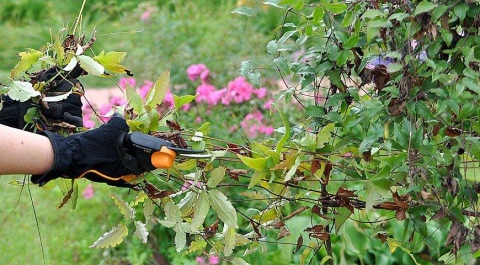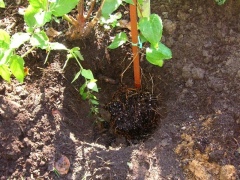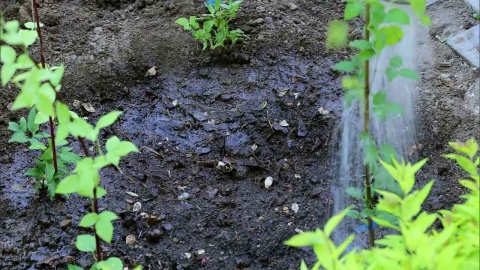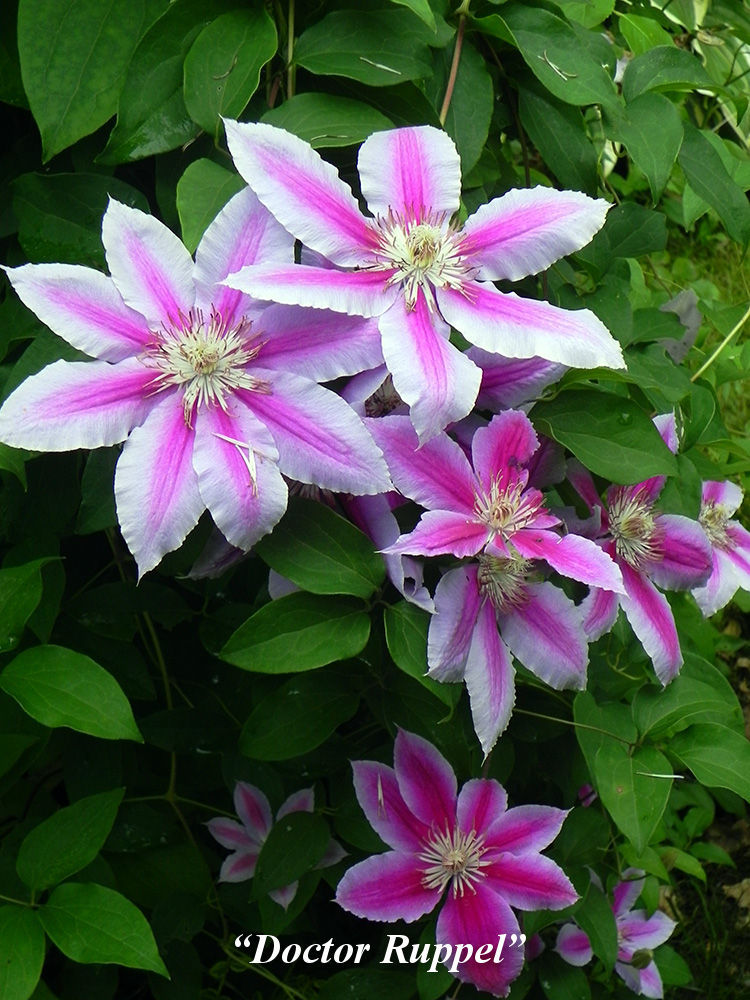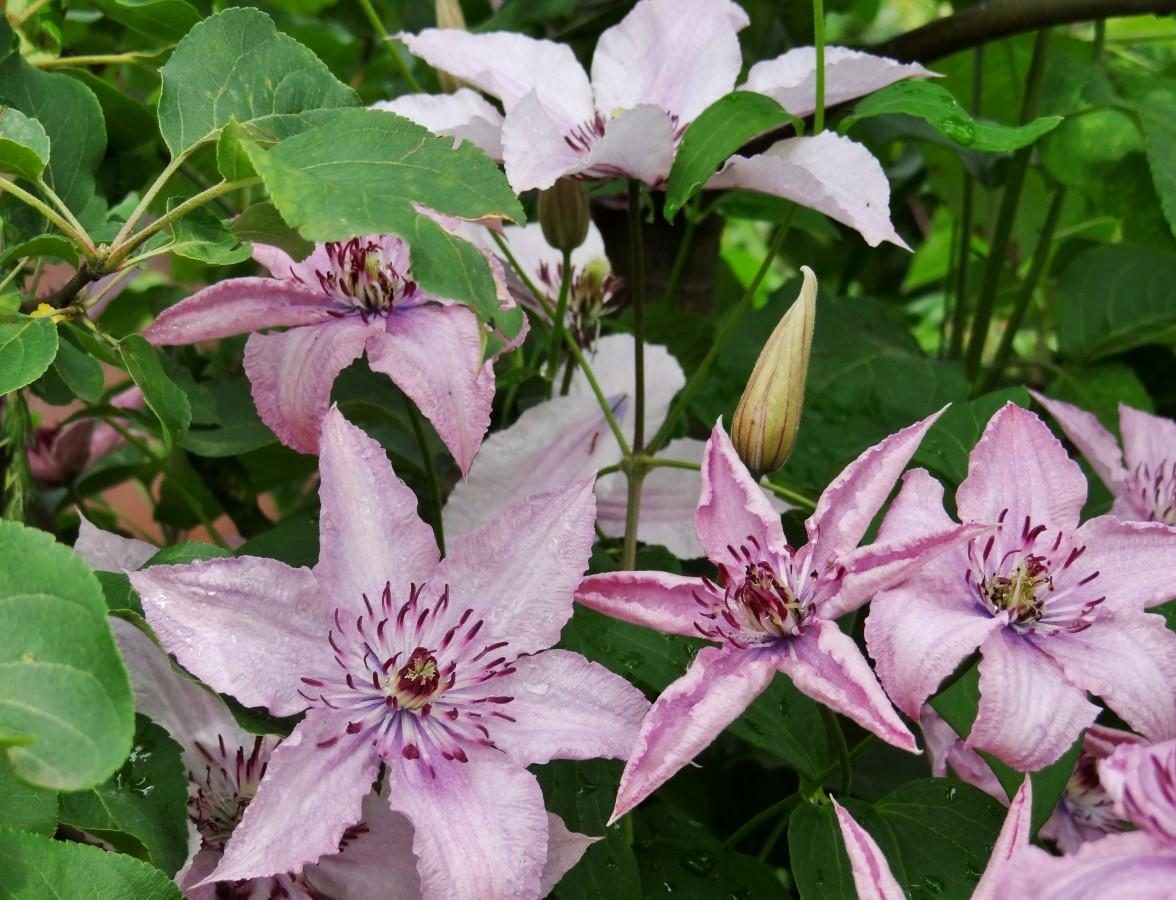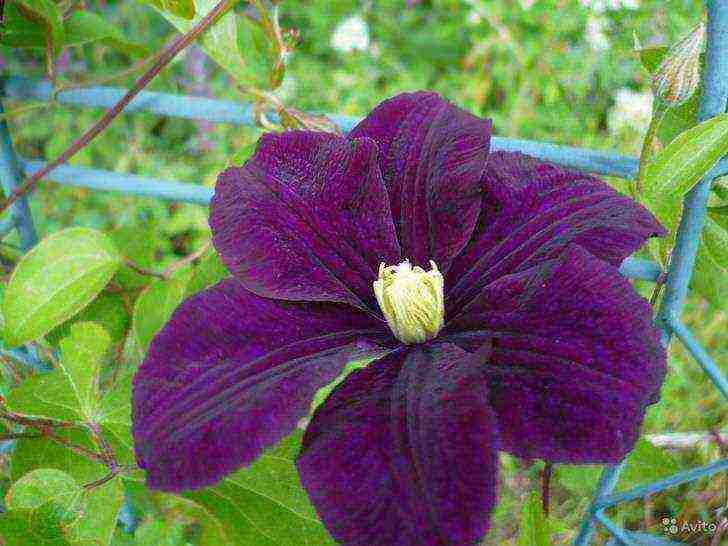Cultivation of clematis varieties Ernest Markham
For a bright and abundant flowering of clematis, it is necessary to create favorable conditions for them already at planting: to determine the exact timing, choose the right soil and correctly plant the planting itself.
If we are talking about the Markham variety, then it is worth noting that the most optimal for planting is the period from late August to early September. As for the soil, a swampy area will be absolutely unacceptable, since this variety, like other types of clematis, does not tolerate stagnant water. Therefore, when planting a vine against the wall of a building, make sure that it does not get water pouring from the roof during rain (Figure 3).
Try to choose a quiet, sunny place, protected from drafts and sudden gusts of wind, since strong air currents can break and confuse shoots, damage flowers, which negatively affects the development of the plant as a whole. Although the culture loves warmth, its roots and base should be in the shade, since the shrub can die from overheating without taking root. Clematis shoots grow quickly, so they will soon need support for weaving and support. They are installed immediately before planting at a distance of at least 20-30 cm from the fence or wall of the house.
Figure 3. Correct planting technology plays a key role in growing vines
For planting, select high-quality material with a well-developed root system (at least 5 roots more than 30 cm long on one cutting). In this case, the roots should not be overdried, it is best if they are wrapped in a layer of moist soil.
In order for the plant to grow quickly and develop well, the seedlings need sufficient space. Therefore, the size of the planting hole must correspond to the root system and be spacious enough (at least 60 cm in depth, width and length). In general, the larger the plant, the deeper it is planted. This rule helps to protect the root system from the summer heat and winter frost. So, experts recommend deepening the root collar of clematis by 10-12 cm (Figure 4).
It is advisable to cover the bottom of the prepared hole with a layer of drainage (pebbles or small pebbles), on top of which a mound of prepared soil mixture should be poured. To prepare it, it is necessary to combine the soil with sand, humus or peat, taken in equal quantities, and also add 1 liter of wood ash and 100 g of complex mineral fertilizer. A hole prepared in this way remains unplanned for about a month. Only after the expiration of this period can you start planting clematis.
Figure 4. Blooming decorative lianas are actively used in landscape design
The seedling is placed on the top of the poured hill, the roots are carefully straightened, and then watered and sprinkled with the remaining substrate. The planted bush is well watered and the surface is mulched around it. You can also shade the soil around the seedling with short annulars and perennials with a shallow root system. Further cultivation involves a whole range of care measures: watering, loosening the soil and controlling weeds, pinching shoots and tying a bush, fertilizing and pruning. You can learn more about all this from the next paragraph of the article.
Description and characteristics
Mountain Clematis belongs to perennials. The homeland of its growth in its natural environment is the Himalayan mountains. The plant is perfectly adapted to the harsh mountain climate and feels comfortable at an altitude of 2000 meters above sea level. On the basis of natural material, breeders were able to develop new varieties of this plant. The most popular of them are "Rubens", "Marjorie", "Elizabeth".
Florists use this beautiful vine when decorating their plots, decorating gazebos, terraces, porch canopies and just walls of buildings with it. The isolated planting of clematis with the help of supports also looks amazingly beautiful. A stationary support is installed on the site, clematis is planted next to it, which, in the process of growth, wraps around the frame and creates a chic flowering island, adjustable by the support frame in shape, height and diameter.
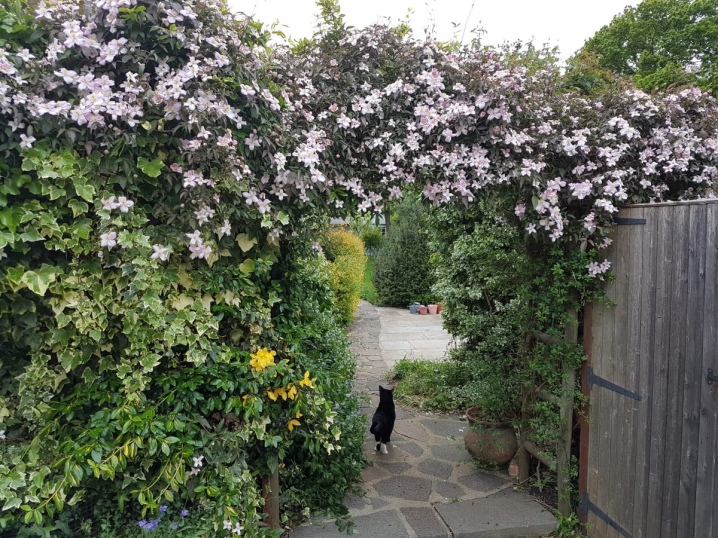
Clematis looks very beautiful against the background of other plantations with dark green foliage. Clematis is called a wall climber, as it clings tenaciously to any vertical surfaces, directing its shoots upward. The vine is attached to the supports thanks to the leaf petioles. Soft mobile shoots, growing up, become strong and woody. An adult liana can grow up to 8 meters long.
Mountain clematis is a flowering plant. The flowers are quite large, reaching 6 centimeters in diameter. The flower has 4 widely spaced petals, which are placed on a horizontal plane. Flowers are located on thin peduncles and are grouped into lush inflorescences from 2 to 5 pieces. Clematis leaves opposite, they have a serrated edging. Their length reaches 10 centimeters. In autumn, the leaves turn yellow and fall off. Abundant flowering of the plant occurs in late spring. It has a delicate aroma reminiscent of a vanilla scent.


